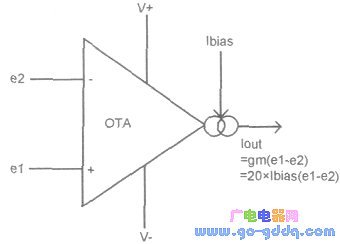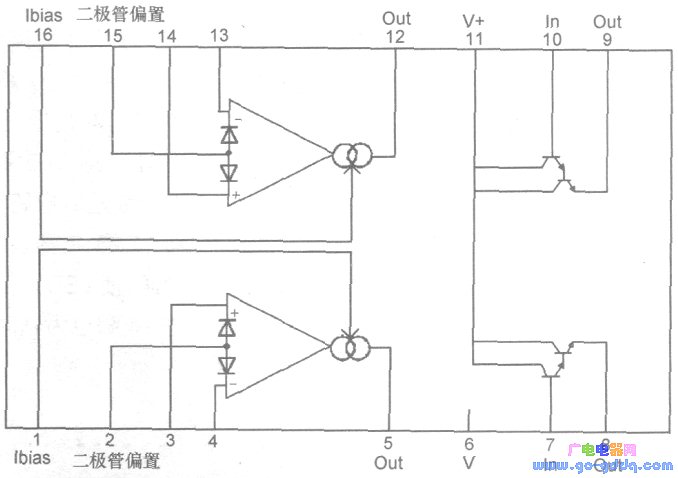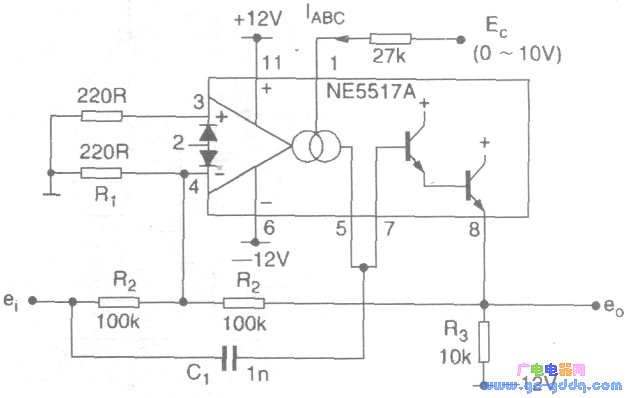When we talk about operational amplifier circuits, most of them are designed for standard op amps that operate with voltage inputs and voltage outputs. However, there is another type of op amp commonly used in audio processing: the transconductance operational amplifier, or OTA. Unlike traditional op amps, OTAs have a voltage input but produce a current output, making them ideal for applications where signal gain needs to be dynamically controlled.

The figure above shows the circuit symbol of an OTA along with its basic working formula. The differential input receives two signals, e1 and e2, and the output current is the difference between these two signals multiplied by the transconductance value (gm) of the OTA. The unit of gm is Siemens (S), where 1 S = 1 / Ω. In practice, the transconductance value is determined by an external bias current, lbias. Specifically, gm equals 20 times the bias current, allowing the gain to be adjusted by varying this current. This flexibility makes OTAs highly useful in various analog applications.

One example of an OTA is the NE5517, an integrated circuit widely used in signal modulation and filtering. The image above displays the pin configuration and internal structure of the NE5517. As shown in Figure 3, this OTA can be used to build a ring modulator circuit. In such a setup, the carrier signal is applied through resistor R2 and the modulated output is taken from R3. The modulation voltage is fed into pin 1 of the NE5517.

When the modulation voltage is positive, the OTA’s gain increases, causing the output current from the OTA to exceed the direct input current through R2. This results in an inverted carrier signal at the output. On the other hand, when the modulation voltage becomes negative, the OTA’s gain decreases, and the direct signal current from R2 dominates, producing an in-phase carrier output. This behavior makes the NE5517 particularly effective in applications like amplitude modulation and frequency mixing in audio systems.
loose tube fiber optic cable,loose tube fiber,fiber optic cable loose tube,loose tube
Guangzhou Jiqian Fiber Optic Cable Co.,ltd , https://www.jqopticcable.com